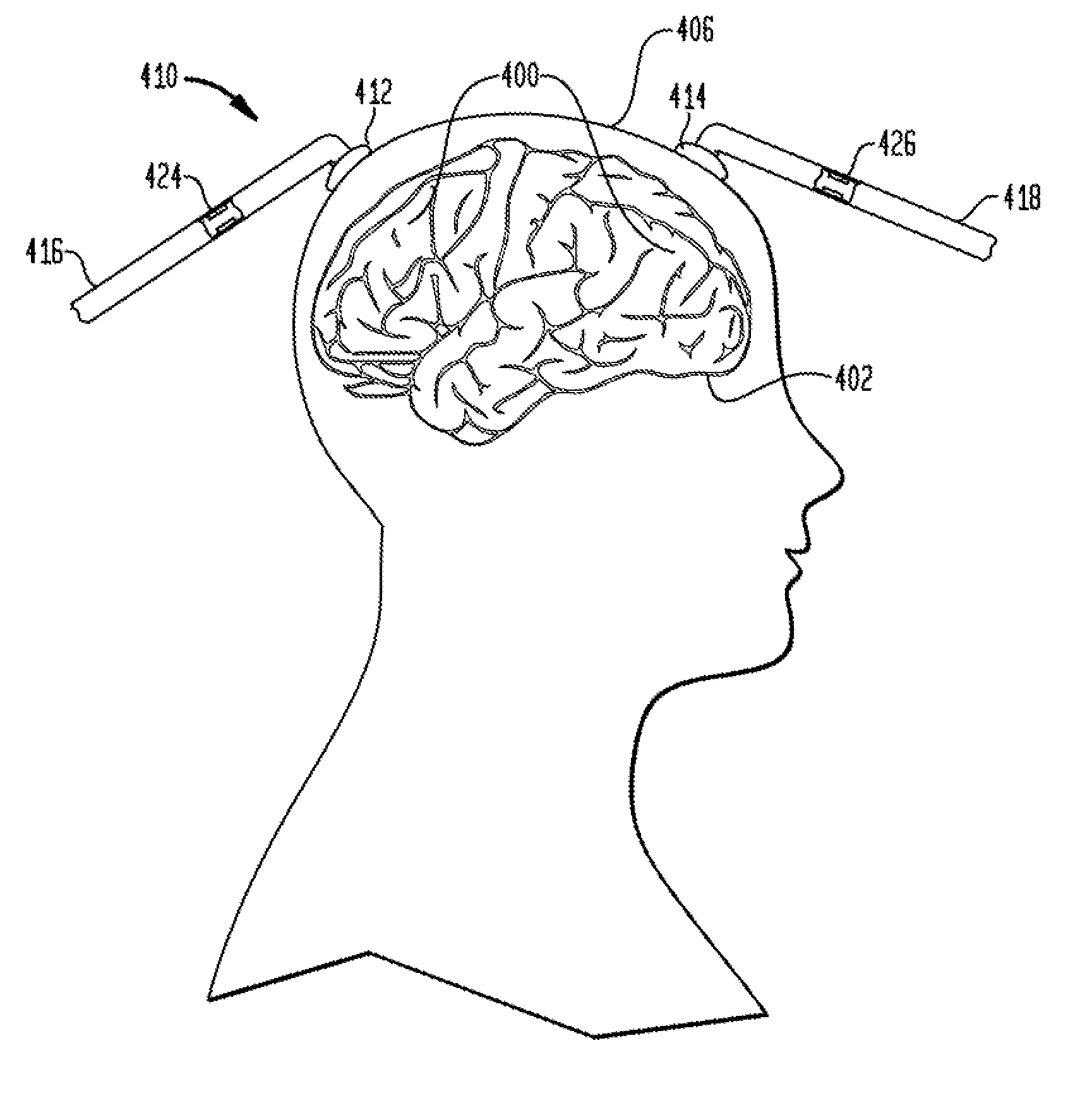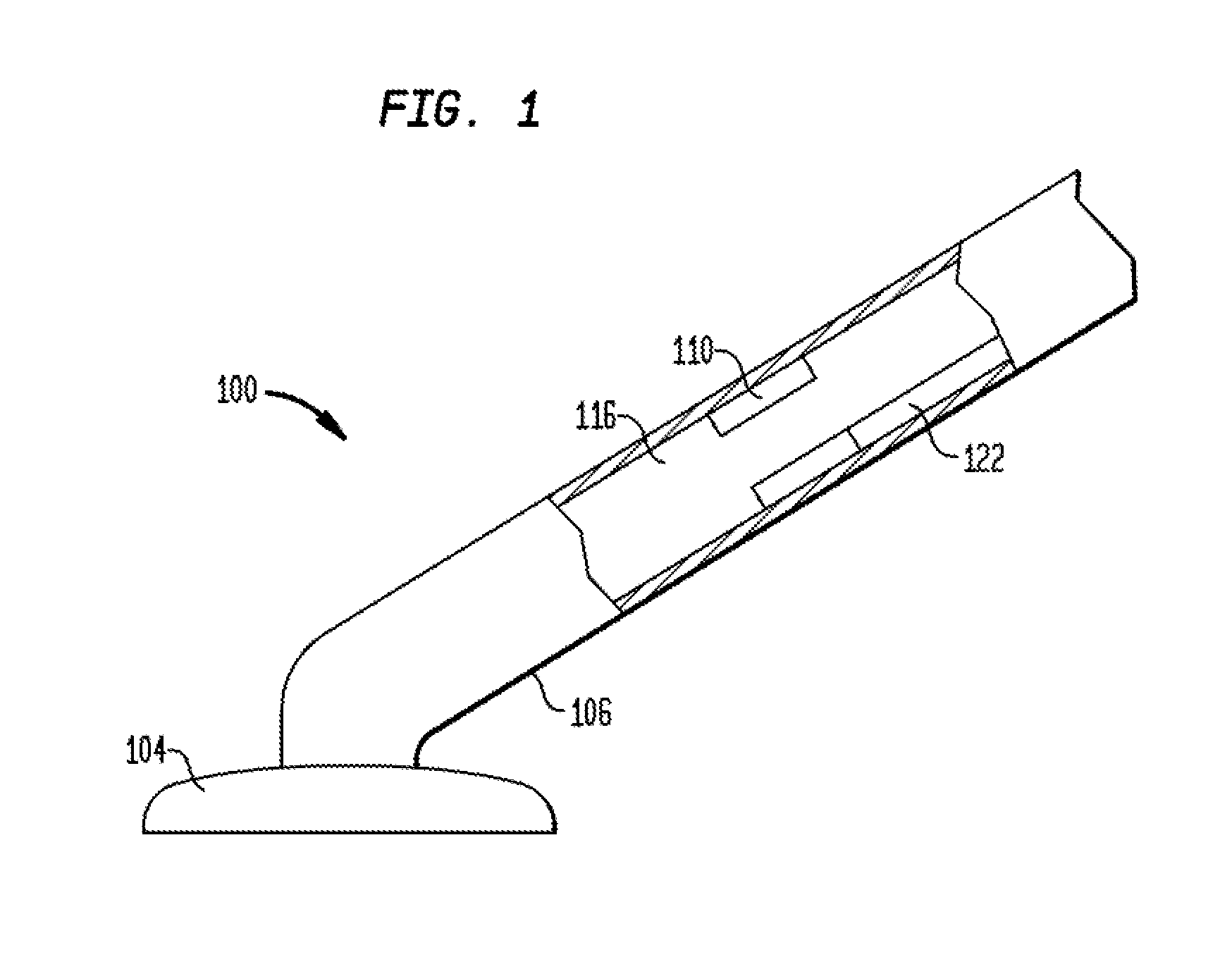Methods and apparatus for transcranial stimulation
a transcranial stimulation and transcranial nerve technology, applied in the direction of external electrodes, electrotherapy, therapy, etc., can solve the problems of poor grooming habits, poor motivation, poor attention, etc., to improve motor performance in healthy people, accelerate recovery, and increase the activity of neurons
- Summary
- Abstract
- Description
- Claims
- Application Information
AI Technical Summary
Benefits of technology
Problems solved by technology
Method used
Image
Examples
Embodiment Construction
[0024]In the present invention, electrical energy is applied to one or more electrodes in the presence of an electrically conductive fluid to deliver an electrical signal to a patient. For convenience, the remaining disclosure will be directed specifically to the application of a low frequency oscillatory and / or weak direct current to one or more target regions within a patient's brain to treat the symptoms of certain disorders, such as epilepsy, depression, Parkinson's disease, stroke and schizophrenia and / or improve motor functions, improve working or declaratory memory and / or memory consolidation. Suitable methods for performing such transcranial current stimulation are described in W. Paulus, “Transcranial Magnetic Stimulation and Transcranial Direct Current Stimulation” (Supplements to Clinical Neurophysiology, volume 56) and US Patent Application Publication No. 20080208287 to Palermo, the complete disclosures of which are incorporated herein by reference. However, it will be ...
PUM
 Login to View More
Login to View More Abstract
Description
Claims
Application Information
 Login to View More
Login to View More - R&D
- Intellectual Property
- Life Sciences
- Materials
- Tech Scout
- Unparalleled Data Quality
- Higher Quality Content
- 60% Fewer Hallucinations
Browse by: Latest US Patents, China's latest patents, Technical Efficacy Thesaurus, Application Domain, Technology Topic, Popular Technical Reports.
© 2025 PatSnap. All rights reserved.Legal|Privacy policy|Modern Slavery Act Transparency Statement|Sitemap|About US| Contact US: help@patsnap.com



